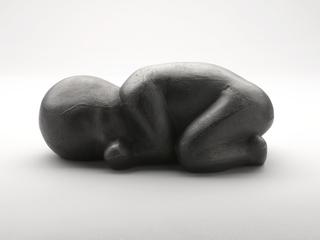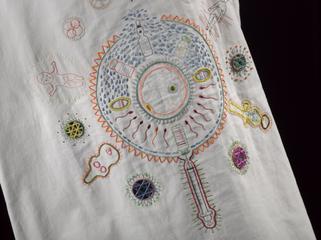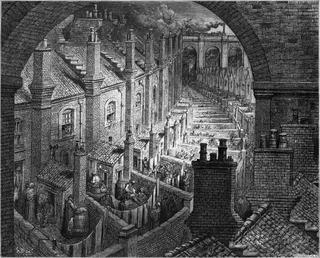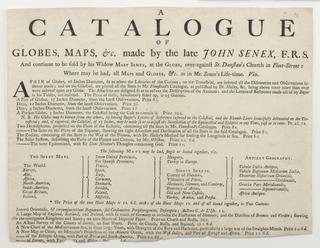
The costume of Great Britain - Dustman
- publisher:
- William Richard Beckford Miller
- maker:
- William Henry Pyne





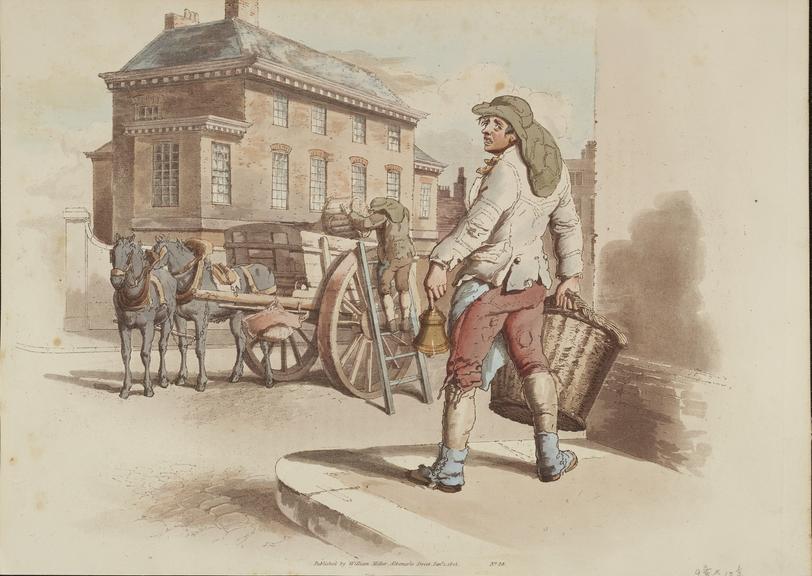
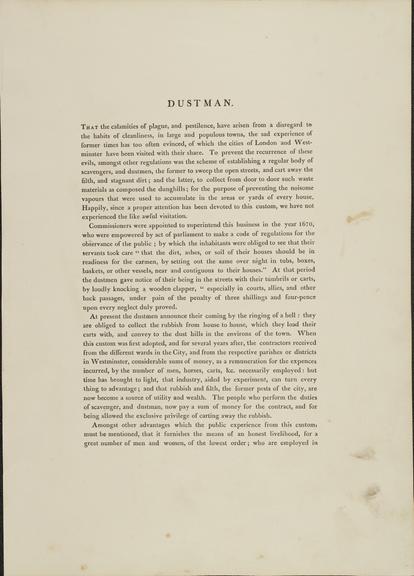

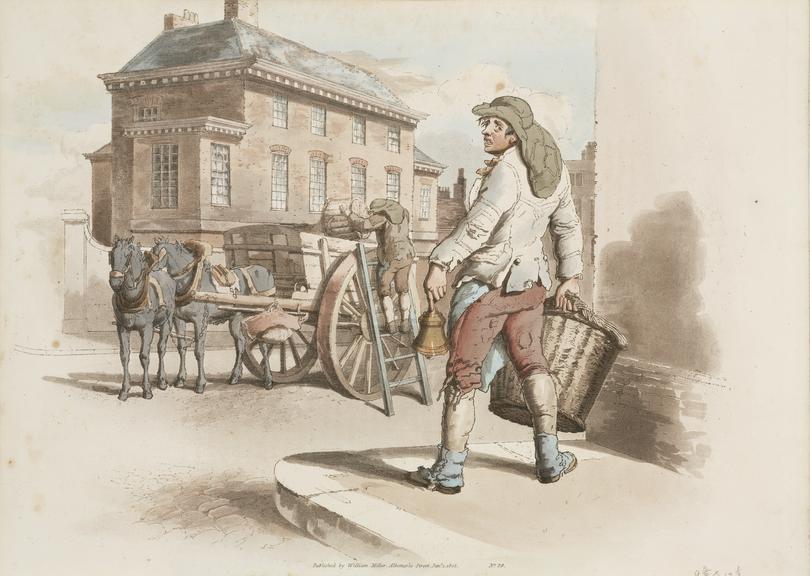
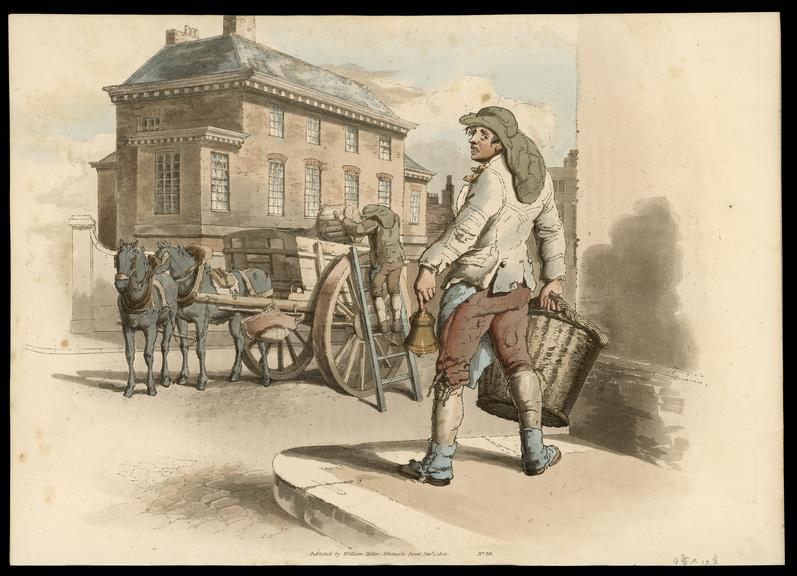
Aquatint, hand coloured (with text) from 'The costume of Great Britain' by W.H. Pyne. Pub. by W. Miller, 1808. Numbered as Plate 28, Dustman.
In the early 1800s, dustmen – then often called ‘night soil’ men – usually announced their arrival by ringing a bell. Their job was to remove piles of rubbish, dirt and ‘night soil’, a polite term for human excrement, from outside of houses, domestic cesspits and the street.
Once the rubbish had been collected using shovels and baskets, it was removed to the outskirts of town. The rubbish was then sorted to find anything that could be re-used, motivated more by thrift than concern for the environment. The ‘night soil’ was re-used as farmland manure.
